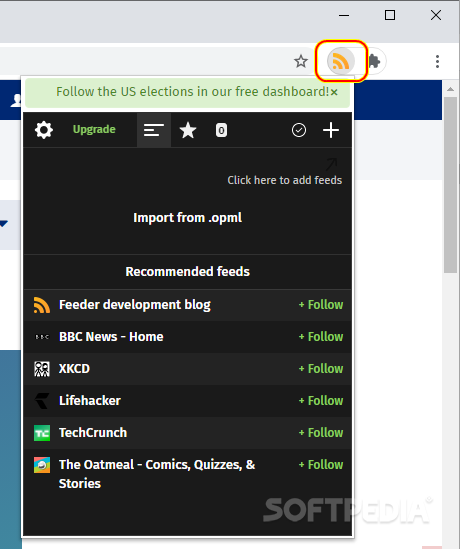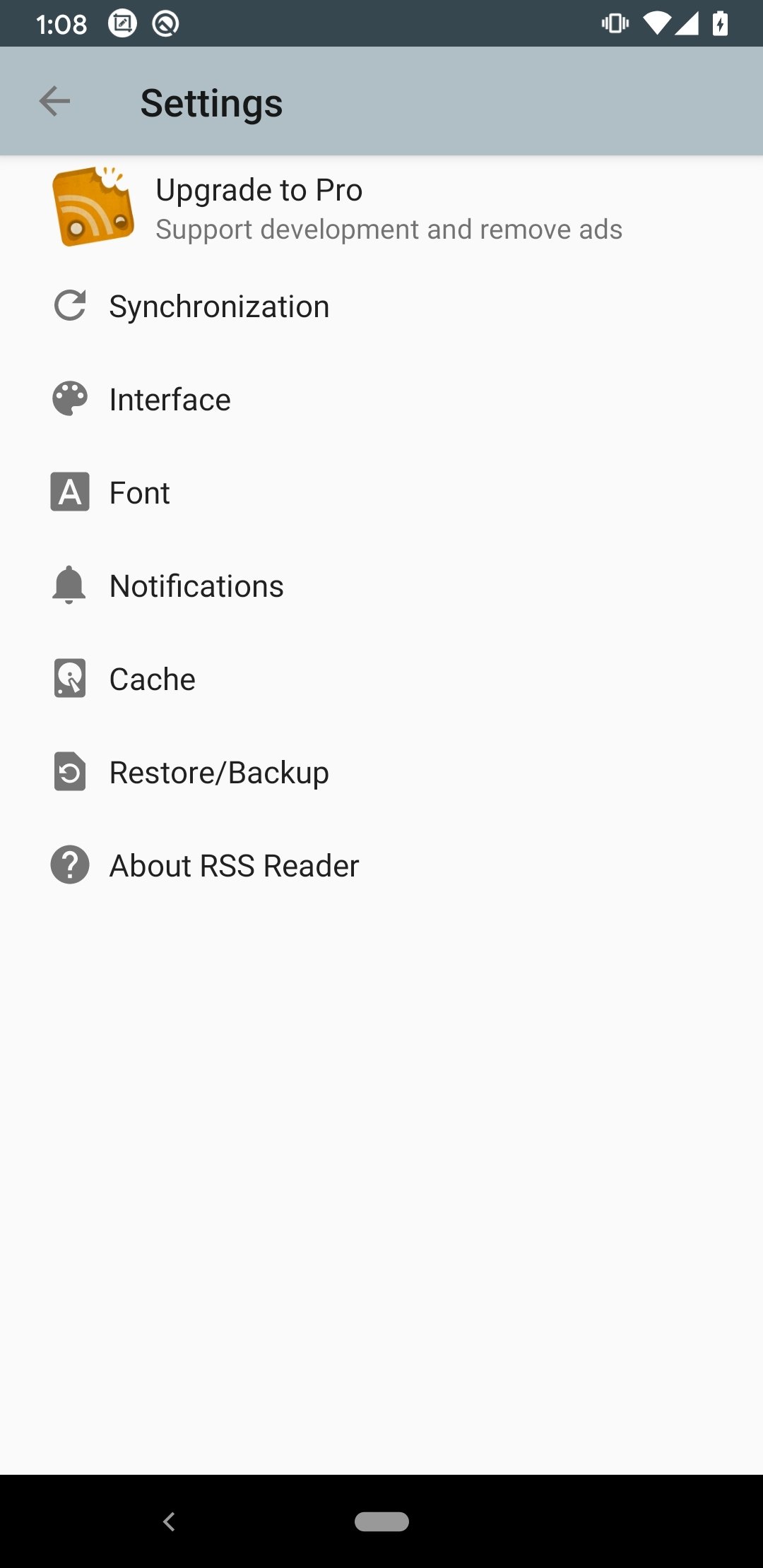

- #FEED READER ANDROID FULL#
- #FEED READER ANDROID FOR ANDROID#
- #FEED READER ANDROID PRO#
- #FEED READER ANDROID SOFTWARE#
- #FEED READER ANDROID CODE#
#FEED READER ANDROID FULL#
Offline reading, the ability to extract full articles like Readability from RSS feeds, sync Feedly reader, import RSS feeds from OMPL, other functions are included in the program. The program allows you to get content from a variety of sources, including Feedly, The Old Reader, Inoreader, Google News, Twitter, and more. Palabre is a one-stop shop for all of your RSS needs. If you are new to the RSS scene and want to get your feet wet, this is a decent solution. Font size, dark mode, and notifications are all supported, but they leave a lot to be desired, especially for professional and passionate readers. Gestures and volume keys are supported, however they are limited. You will either add or import RSS feeds before selecting one of several views to read and consume content. RSS Reader is a straightforward, free, and ad-supported RSS reader that does the job.
#FEED READER ANDROID PRO#
While the app is free, if you want to remove adverts and gain access to other features such as voice-reading, personalised notifications, and better podcasts, you must purchase the Pro version. Furthermore, it integrates third-party services such as Pocket, Instapaper, Readability, and others. The app has an easy-to-use interface and includes features like as offline reading, notifications, the ability to share articles, several reading views, tag support, podcasts, and more. You may even sync items between the local reader, Feedly, and Old Reader using gReader.
#FEED READER ANDROID SOFTWARE#
The software allows you to utilise Feedly, The Old Reader, and the standard RSS reader, all of which save all data locally. GReader is a popular RSS program, and for good reason: it’s the ideal answer for Feedly users and those looking for a local RSS reader. We hope the developers did not forsake it, but as it is free, you will not lose any money if they do. Unfortunately, no updates have been made since 2018. It’s 100% free with no advertisements, which is always a plus. This one’s screenshots really do tell the complete story. The app employs Material Design and is simple to use. It supports RSS and Atom feeds, as well as dark and light themes and OPML files. You can follow practically any website, and the feed will populate with the most recent news from that site.
#FEED READER ANDROID FOR ANDROID#
Here is the list of Best RSS Readers For Android AggregatorĪggregator is a less popular but still highly capable RSS reader app for Android. Let’s look at some of the top RSS reader apps for the Android platform. This makes it easier to read and research without having to surf the web for content. You can further categorize these blogs by niche or topic, such as health, money, technology, etc.

An RSS app will serve as a one-stop shop for consuming content from multiple sources. Instead of dealing with a social network feed or visiting multiple websites, you may open your RSS app and read every article and blog post in reverse chronological order.Īlso, we love reading on our smartphones these days, which is why there are so many amazing RSS reader applications for Android. It remains the greatest approach to mix content from several sources into one app. RSS is utilised by almost all podcast apps, but it’s less popular. Since the 1990s, RSS (Really Simple Syndication) has allowed sites to publish a feed of their material that can be readily analysed and aggregated by RSS apps.

Here is the list of Best RSS Readers For Android.I just need to wrap it inside the AndroidView composable function. fun MainScreen (viewModel: MainViewModel, useSystemUIController: Boolean) '")īy right, I should be able to build the article screen from the feed's data, but I took the shortcut to implement an in-app web browser using WebView. The top and bottom app bars are implemented using Scaffold composable function.
#FEED READER ANDROID CODE#
For details, please refer to the source code directly. The source code shown here may not be complete. I just highlight the high-level implementations that are worth mentioning. Implemented Proto DataStore to store user preferences instead of using the same ArticlesDatabase room database. For example, I haveĬhanged the app to use multiple view models instead of a single view modelĪdded usecase classes in the domain layer and move all repository-related classes (including the ArticlesRepository interface) from the domain to the data layer. So, the information provided in this article may be outdated. Important note: This app is under heavy development. Implements local RoomDatabase which acts as single source of truthįetches XML string using ktor client, parses the XML feed and converts the XML to remote data (which is transformed to local data for local database writing) Implements the ArticlesRepository interface, fetches articles from WebService and write into the ArticlesDatabase, map and transform local data to domain data


 0 kommentar(er)
0 kommentar(er)
